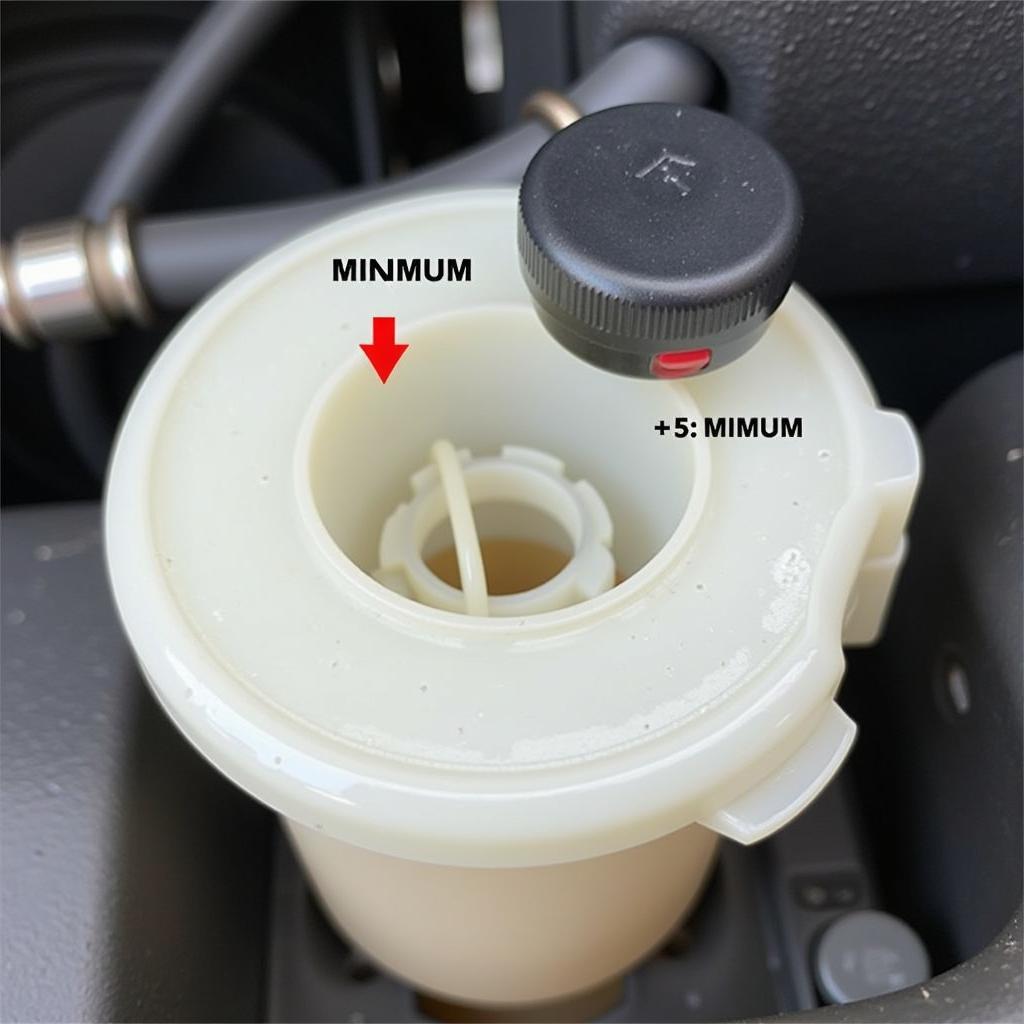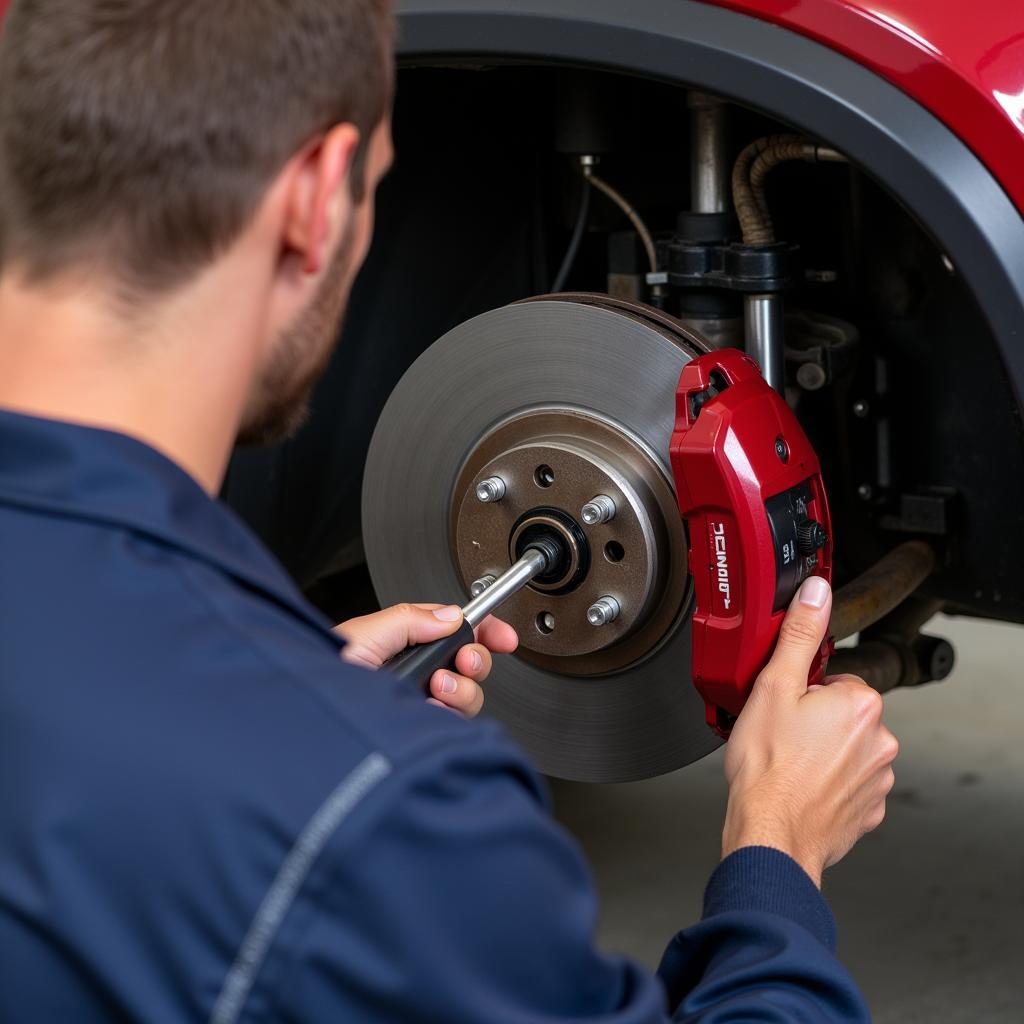The brake warning light on your 2006 Honda CRV is a critical safety feature designed to alert you to potential issues with your braking system. If this light illuminates on your dashboard, it’s crucial not to ignore it. Addressing the underlying problem promptly can prevent further damage and ensure your safety on the road.
This comprehensive guide explores the common causes behind a 2006 Honda CRV brake warning light and provides insightful solutions to help you resolve the issue effectively.
Understanding Your CRV’s Brake Warning Light System
Your Honda CRV utilizes a sophisticated system of sensors and components to monitor the health of your brakes. When the brake warning light turns on, it signifies that one or more of these components might be malfunctioning, triggering the warning signal.
Here’s a breakdown of what your brake warning light could indicate:
- Low Brake Fluid Level: The most common culprit, low brake fluid, can severely impact braking performance.
- Worn Brake Pads: Brake pads have wear indicators that trigger the warning light when they thin out, indicating the need for replacement.
- Faulty Brake Light Switch: This switch activates your brake lights when you press the pedal. A malfunctioning switch can also trigger the brake warning light.
- ABS Issue: While less common, a problem with your Anti-lock Braking System (ABS) can also illuminate the brake warning light. This usually requires a professional diagnosis.
 2006 Honda CRV Brake Fluid Reservoir
2006 Honda CRV Brake Fluid Reservoir
Troubleshooting Common Causes
Before heading to a mechanic, you can perform some basic checks to pinpoint the issue:
- Check Your Brake Fluid Level: Park your CRV on a level surface and locate the brake fluid reservoir under the hood. The reservoir will have “DOT 3” or “DOT 4” printed on the cap, indicating the type of brake fluid your vehicle uses. If the fluid level is below the “MIN” line, it needs topping up.
- Inspect Your Brake Pads: While not easily accessible without removing a wheel, you can try to get a visual on your brake pads through the wheel spokes. Look for a thin metal tab sticking out from the brake pad. If you see this, or your brake pads look less than ¼ inch thick, it’s time for a replacement.
When to Seek Professional Help
If you’ve checked the brake fluid and your brake pads seem fine, it’s best to take your CRV to a trusted mechanic. Issues like a faulty brake light switch or ABS problems require specialized tools and expertise to diagnose and repair.
“Ignoring a brake warning light can have serious consequences,” warns John Smith, a seasoned automotive electrician with over 20 years of experience. “It’s always best to err on the side of caution and have your braking system inspected by a professional if you’re unsure about the cause of the warning light.”
Preventing Future Brake Warning Light Issues
Maintaining your CRV’s braking system is crucial for optimal performance and safety. Here are some preventive measures:
- Regular Brake Fluid Checks: Check your brake fluid level at least once a month and top it up as needed.
- Timely Brake Pad Replacement: Don’t wait for the warning light to come on. Consult your owner’s manual for recommended brake pad replacement intervals.
- Annual Brake Inspections: Schedule yearly brake inspections with a qualified mechanic to catch potential problems early on.
 2006 Honda CRV Brake Inspection
2006 Honda CRV Brake Inspection
Conclusion
Addressing the brake warning light on your 2006 Honda CRV is not something to postpone. By understanding the common causes and taking appropriate action, you can ensure the longevity of your braking system and, most importantly, your safety on the road. Regular maintenance and timely repairs are key to preventing future issues and enjoying a smooth and secure driving experience.
